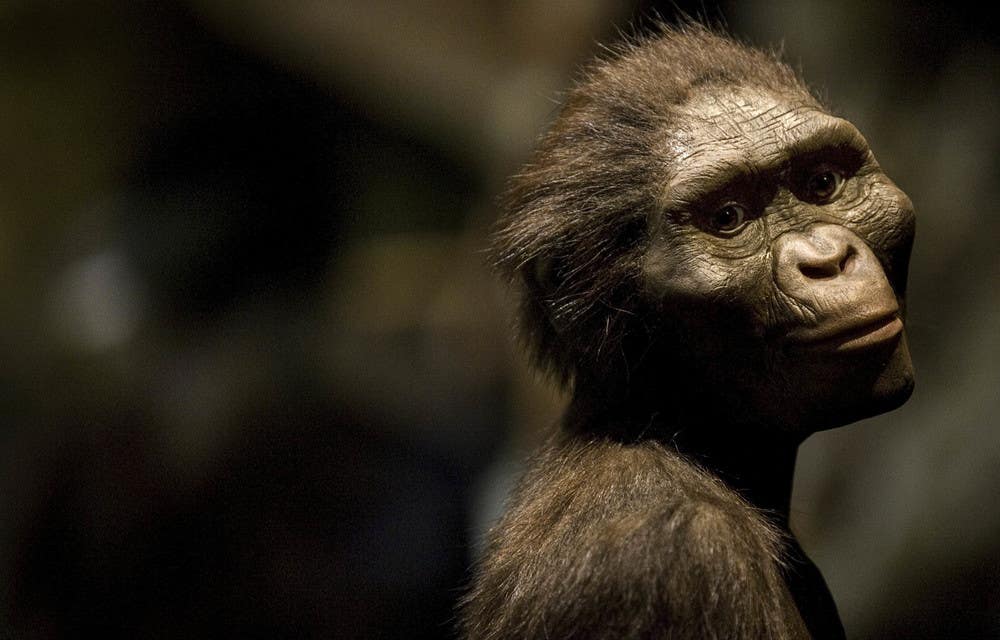Three million years ago, our ancestors were vegetarian, study finds
Scientists discover how isotope analysis of fossil tooth enamel reveals Australopithecus’ plant-based diet and its implications for human evolution

New isotope analysis of Australopithecus tooth enamel uncovers a plant-based diet, challenging long-held views on meat’s role in human evolution. (CREDIT: CC BY-SA 4.0)
The evolution of human diets remains a captivating mystery, often tied to the consumption of animal resources. High-quality animal products such as meat, bone marrow, and eggs provide nutrients essential for brain development and overall health. However, the role of animal foods in shaping human evolution is complex and far from resolved.
Early ancestors like Australopithecus, who lived roughly 3.5 million years ago in southern Africa, mostly relied on plant-based diets.
Recent research, published in Science, analyzed nitrogen isotope ratios in the fossilized tooth enamel of seven Australopithecus individuals. These results show little to no evidence of regular meat consumption, challenging long-standing hypotheses about early hominin diets.
The Role of Diet in Evolution
Animal products are nutritionally dense and easier to digest than raw plant foods. They contain essential amino acids, vitamins, and minerals crucial for brain and body development.
The shift to consuming animal resources has been linked to the growth of brain size, increased stature, and reduced gut size in early humans. However, evidence suggests that Australopithecus did not partake in habitual meat consumption.
Australopithecus individuals lived in diverse environments, practiced bipedal locomotion, and possessed humanlike hand proportions.
Fossil evidence, including 3.4-million-year-old cut marks on bones, hints at occasional use of tools for foraging. Yet, their diets remained predominantly plant-based, with minimal reliance on animal products. This contrasts with later hominins like Homo erectus and Neanderthals, who regularly consumed meat.
To uncover dietary habits, researchers used advanced techniques to measure nitrogen isotope ratios in fossilized tooth enamel from Australopithecus individuals. Tooth enamel, the hardest tissue in mammals, preserves dietary signatures for millions of years.
Related Stories
Nitrogen isotopes reveal an organism’s trophic level within a food web. Herbivores have higher nitrogen isotope ratios than plants, while carnivores have even higher ratios than herbivores.
Lead researcher Tina Lüdecke and her team analyzed enamel from specimens found in South Africa’s Sterkfontein Caves. The results showed consistently low nitrogen isotope ratios, similar to herbivores. These findings indicate that Australopithecus predominantly consumed plants.
“Tooth enamel is remarkable in its ability to preserve isotopic fingerprints for millions of years,” explains Lüdecke, who leads the “Hominin Meat Consumption” research group at the Max Planck Institute for Chemistry. By comparing isotopic data with that of contemporary animals, the team confirmed the plant-based nature of the Australopithecus diet.
Minimal Meat Consumption
While evidence suggests occasional consumption of animal protein from eggs or insects, Australopithecus likely did not hunt large mammals. This contrasts with later hominins like Neanderthals, whose diets included significant proportions of meat.
Advancements in isotopic analysis allowed researchers to extend dietary studies to fossils millions of years old. Alfredo Martínez-García’s lab at the Max Planck Institute developed the novel techniques used in this study.
“This method offers exciting opportunities to explore when meat consumption began and its role in evolutionary milestones such as brain growth,” says Martínez-García.
The Sterkfontein Caves, a UNESCO World Heritage Site, have been a focal point for hominin studies since Robert Broom’s discoveries in 1936. Professor Dominic Stratford, Director of Research at Sterkfontein, emphasizes the importance of this new work. “This study represents a major step in understanding the diets and evolutionary trajectory of early hominins,” he states.
Future research aims to analyze fossilized tooth enamel from other sites across Africa and Southeast Asia. By comparing data across species and time periods, scientists hope to identify the evolutionary transition to meat consumption and its impact on human development.
“Our findings challenge previous assumptions and open new avenues for understanding human evolution,” Lüdecke concludes. The groundbreaking use of isotopic analysis provides fresh perspectives on early hominin diets and evolutionary history.
Note: Materials provided above by The Brighter Side of News. Content may be edited for style and length.
Like these kind of feel good stories? Get The Brighter Side of News' newsletter.
Rebecca Shavit
Science & Technology Journalist | Innovation Storyteller
Based in Los Angeles, Rebecca Shavit is a dedicated science and technology journalist who writes for The Brighter Side of News, an online publication committed to highlighting positive and transformative stories from around the world. With a passion for uncovering groundbreaking discoveries and innovations, she brings to light the scientific advancements shaping a better future. Her reporting spans a wide range of topics, from cutting-edge medical breakthroughs and artificial intelligence to green technology and space exploration. With a keen ability to translate complex concepts into engaging and accessible stories, she makes science and innovation relatable to a broad audience.



